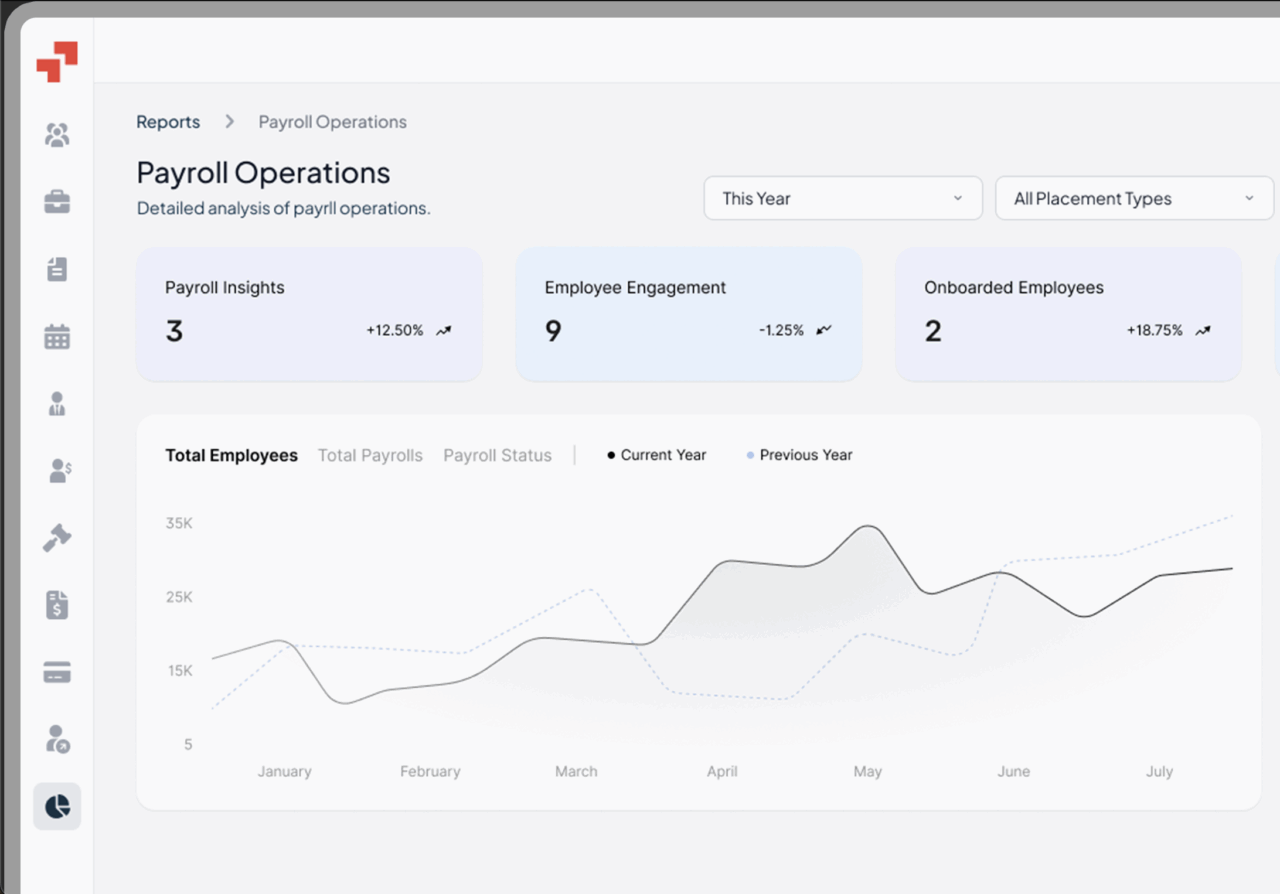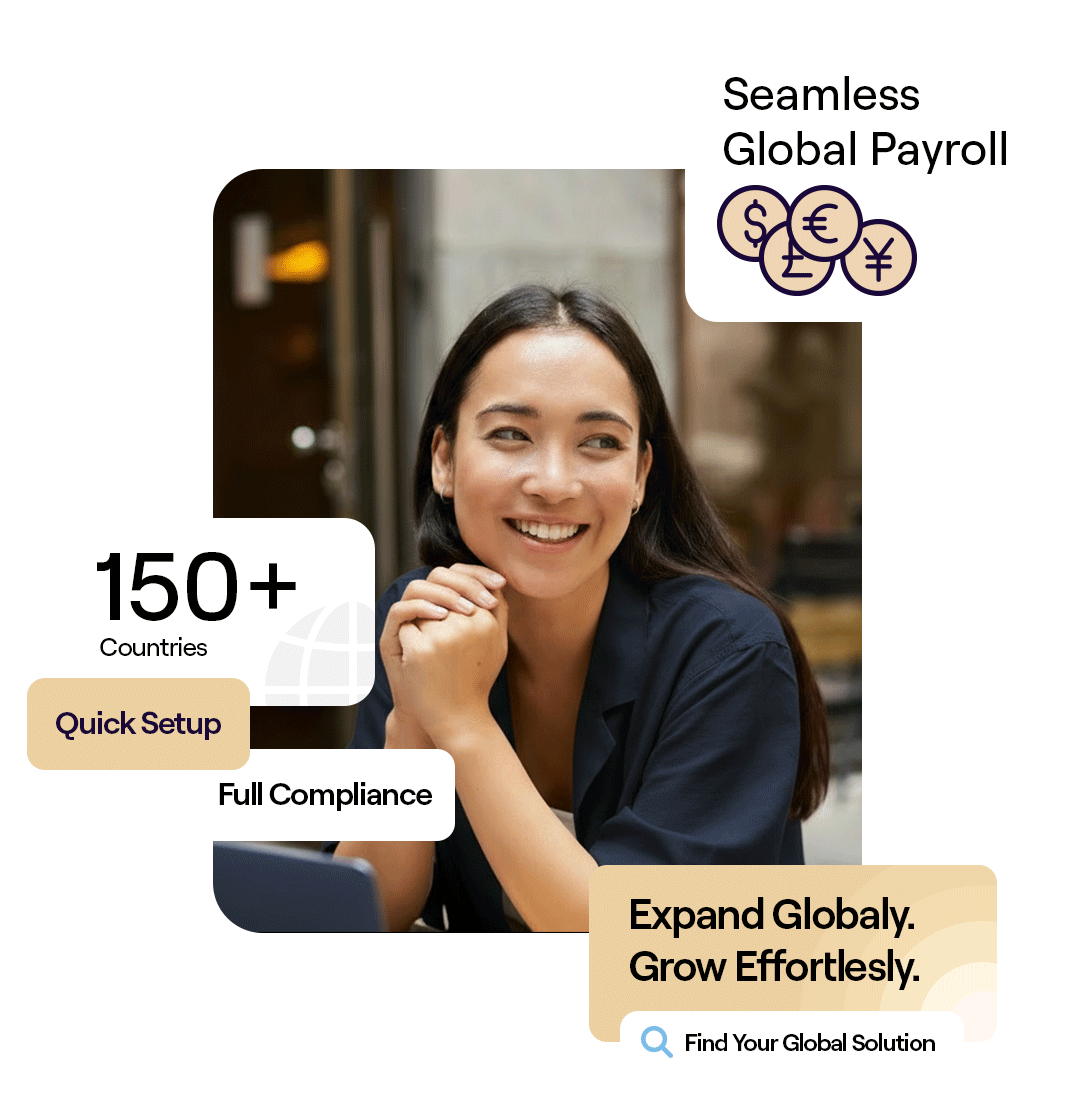Global Workforce GlossaryGlobal Payroll
Related Terms
Multi-Country Payroll
International Payroll Outsourcing
Managed Payroll
Payroll Compliance
Gross to Net (GTN)
Managing international employees across multiple countries is more than just sending salaries on time. Businesses expanding globally face complex challenges like varying labor laws, local tax regulations, and compliance requirements. A well-planned global payroll strategy ensures employees are paid accurately, on time, and in accordance with local employment laws, while giving employers visibility and control across multiple regions.
Table of Contents
- What is co-employment?
- What are co-employment laws?
- Why is co-employment a risk?
- What are co-employment rules
- Co-employment do’s and don’ts
- How does co-employment work?
- What is the difference between co-employment and joint employment?
- Co-employment vs PEO
- Co-employment vs employee leasing
- Is co-op considered a full-time employee?
- Is it illegal to work for two jobs in the same industry?
- Co-employment examples
- Practical Case Study Example
- PamGro and Co-employment: Your Global Partner
What is Global Payroll?
Global payroll refers to the process of managing employee compensation across multiple countries through a unified, compliant system.
It encompasses payroll data, salary calculations, tax withholdings, benefits administration, and timely payments, all tailored to the legal and regulatory requirements of each country where employees are located.
This approach helps businesses streamline their payroll operations, reduce administrative burdens, and ensure global payroll compliance with diverse local laws and regulations. By centralizing payroll management, companies can achieve greater efficiency and consistency in compensating their global workforce.
How Does Global Payroll Work?
Global payroll operates by consolidating payroll processes across different countries into a single system. This involves collecting employee data, calculating earnings and deductions, applying country-specific tax laws, and distributing payments in local currencies.
Key components include local payroll regulations :
- Data Collection: Gathering employee information, time and attendance records, and compensation details.
- Payroll Calculation: Computing gross pay, deductions, and net pay based on local regulations.
- Compliance: Ensuring adherence to local tax laws, labor regulations, and reporting requirements.
- Payment Distribution: Transferring funds to employees in their respective currencies and payment methods.
By integrating these components into a cohesive system, businesses can manage their global payroll efficiently and accurately.
What is the Global Payroll Process?
The global payroll process involves several critical steps to ensure paying employees correctly and on time:
- Employee Data Collection: Gathering personal and employment information from each employee.
- Time and Attendance Tracking: Recording hours worked, overtime, and leave taken.
- Payroll Calculation: Determining gross pay, applying deductions, and calculating net pay.
- Tax Compliance: Withholding and remitting taxes as per local laws.
- Payment Processing: Disbursing salaries through appropriate channels.
- Reporting and Documentation: Generating payslips, tax forms, and compliance reports.
Each of these steps must be tailored to the specific requirements of the country in which the employee is based.
What Are the 3 Types of Payroll?
There are three primary types of payroll systems used by businesses:
- In-House Payroll: Managed internally by the company’s HR or finance department.
- Outsourced Payroll: Handled by an external payroll service provider.
- Global Payroll: A centralized system managing payroll across multiple countries, often facilitated by an Employer of Record (EOR).
Each type has its advantages and considerations, depending on the company’s size, resources, and global presence.
What Are Global Payroll Services?
Global payroll services are specialized offerings that assist businesses in managing payroll for employees across different countries, often requiring a global payroll partner . These services typically include:
- Payroll Processing: Handling the calculation and distribution of employee salaries.
- Tax Compliance: Ensuring adherence to local tax laws and regulations.
- Benefits Administration: Managing employee benefits such as health insurance and retirement plans.
- Reporting and Documentation: Generating necessary reports and documents for compliance purposes.
By leveraging these services, companies can mitigate risks associated with international payroll management and focus on their core business operations.
What Are the Challenges of Global Payroll?
Managing global payroll complexities presents several challenges:
- Complex Compliance: Navigating diverse tax laws and labor regulations across countries.
- Currency Variations: Handling payments in multiple currencies and managing exchange rate fluctuations.
- Data Security: Ensuring the protection of sensitive employee information across borders.
- Integration Issues: Aligning global payroll systems with other HR and financial systems.
- Cultural Differences: Addressing varying expectations and practices related to compensation and benefits.
Overcoming these challenges requires expertise and robust systems to ensure smooth payroll operations.
What are the Benefits of Outsourcing Global Payroll
Outsourcing global payroll with local experts offers several advantages:
- Cost Savings: Reduces the need for in-house payroll departments and infrastructure.
- Expertise: Access to specialized knowledge of international payroll laws and regulations.
- Efficiency: Streamlines payroll processes and reduces administrative burdens.
- Compliance Assurance: Helps ensure adherence to local laws and regulations.
- Scalability: Facilitates easy expansion into new markets without the need for establishing local entities.
By outsourcing, companies can focus on strategic growth while ensuring their payroll operations are handled effectively.
Define the Importance of Global Payroll for Employers
Global payroll is crucial for employers with an international workforce:
- Ensures Compliance: Helps meet legal obligations in different jurisdictions.
- Enhances Employee Satisfaction: Timely and accurate payments contribute to positive employee experiences.
- Supports Global Expansion: Facilitates smooth entry into new markets by managing payroll complexities.
- Improves Operational Efficiency: Centralized payroll systems streamline processes and reduce errors.
A well-managed global payroll system is integral to the success of businesses operating internationally
How to Become a Global Payroll Specialist
Becoming a global payroll specialist involves understanding global talent :
- Education: Acquiring knowledge in accounting, finance, or human resources.
- Certifications: Obtaining certifications such as the Global Payroll Management Certificate (GPMC).
- Experience: Gaining experience in payroll processing and understanding international labor laws.
- Continuous Learning: Staying updated on changes in global payroll regulations and technologies.
This expertise enables professionals to manage complex payroll systems and ensure compliance across multiple countries.
What Is the Difference Between EOR and Global Payroll?
An Employer of Record (EOR) is a service provider that becomes the legal employer of your international employees while you retain control over their day-to-day work. The EOR handles all employment-related responsibilities, including payroll, taxes, benefits, and compliance with local labor laws, allowing your company to hire globally without establishing a local legal entity. In contrast, global payroll involves overseeing and processing employee compensation for staff working in multiple countries, ensuring accurate payments and compliance with each location’s local labor and tax regulations.
Key differences include:
- Employment Relationship: EOR acts as the legal employer; global payroll manages compensation for employees directly employed by the company.
- Legal Compliance: EOR ensures compliance with local labor laws; global payroll ensures accurate and timely payments.
- Scope: EOR provides a broader range of HR services; global payroll focuses specifically on payroll management.
Understanding these differences helps companies choose the appropriate solution for their international workforce needs
Example Explaining Global Payroll
Consider a U.S.-based tech startup expanding into India, Germany, and Brazil. Without a global payroll system, the company would need to establish separate legal entities in each country, navigate complex tax regulations, and manage multiple payroll systems. This approach is time-consuming and costly.
By partnering with a global payroll provider, the company can centralize multi country payroll operations, ensuring compliance with local laws and timely payments to employees across all locations. This streamlined approach allows the company to focus on growth and innovation while managing payroll efficiently.
PamGro: Simplifying Global Payroll Management
At PamGro, we specialize in providing comprehensive global payroll solutions that streamline the payroll process across multiple countries. Our services include:
- Centralized Payroll Management: Consolidate payroll operations into a single system for efficiency and accuracy.
- Compliance Assurance: Navigate complex tax laws and labor regulations to ensure adherence.
- Currency Management: Handle payments in various currencies with up-to-date exchange rates.
- Scalable Solutions: Adapt payroll systems to accommodate business growth and expansion.
By partnering with PamGro, businesses can simplify their global payroll operations and improve expense management , reduce administrative burdens, and ensure compliance with local laws, allowing them to focus on strategic growth and innovation
Hire the Best Talent, Anywhere






